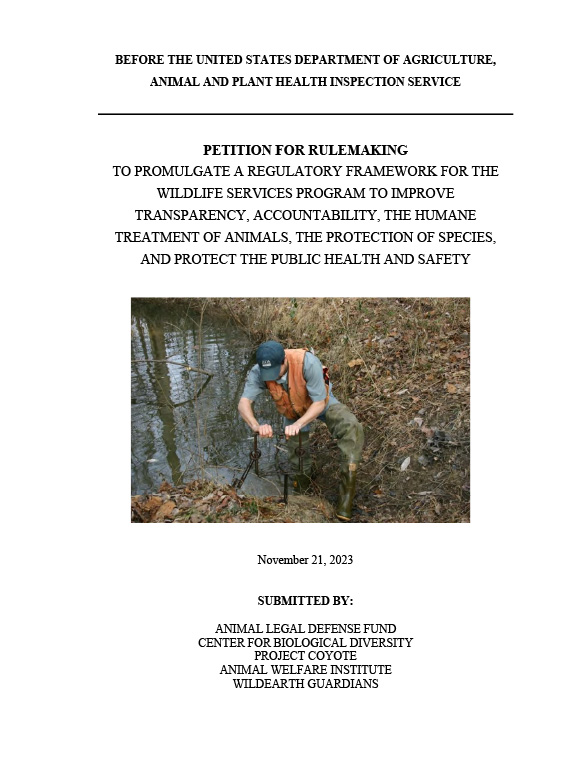
Demanding USDA Institute Regulatory Framework to Govern Wildlife Services
The Animal Legal Defense Fund, as part of a coalition, submitted a petition for rulemaking to the USDA Animal and Plant Health Inspection Service urging Wildlife Services to phase out lethal control of wild animals, including prohibiting specific practices such as neck snares, M-44 cyanide bombs, lead bullets, and more.
Status
Next Step
USDA to Respond to Petition
On November 21, 2023, the Animal Legal Defense Fund, Center for Biological Diversity, Project Coyote, the Animal Welfare Institute, and WildEarth Guardians submitted a petition for rulemaking to the U.S. Department of Agriculture’s (USDA) Animal and Plant Health Inspection Service (APHIS) urging the agency for a comprehensive regulatory framework to govern Wildlife Services, which will help fill any gaps left by Congress and ensures consistency with all relevant laws and policies.

Wildlife Services traps, snares, poisons, and shoots millions of animals every year in the U.S., primarily on behalf of the animal agriculture industry, as well as pro-hunting interests. Between 2010 and 2022, the program killed over 37.4 million native animals, including coyotes, foxes, mountain lions, beavers, and many species of birds. Wildlife Services also unintentionally kills non-target animals, including companion animals and imperiled species, such as eagles, falcons, condors, wolves, grizzly bears, and many more. Killing such a large number of animals has contributed to the local extinction of many North American species, and has fundamentally altered ecosystems at the local, regional, and continental levels.
What action has been taken? The petition for rulemaking was submitted to the USDA’s APHIS urging the agency for a comprehensive regulatory framework to govern Wildlife Services.
Why this case is important: Wildlife Services traps, snares, poisons, and shoots millions of animals every year in the United States, primarily on behalf of the animal agriculture industry as well as hunting interests. The program killed over 37.4 million animals between 2010 and 2022, including federally or state-protected animals like eagles, falcons, condors, foxes, wolves, grizzly bears, and many more. A regulatory framework for Wildlife Services is needed to improve transparency, accountability, humane treatment of animals, the protection of species, and public health and safety.
